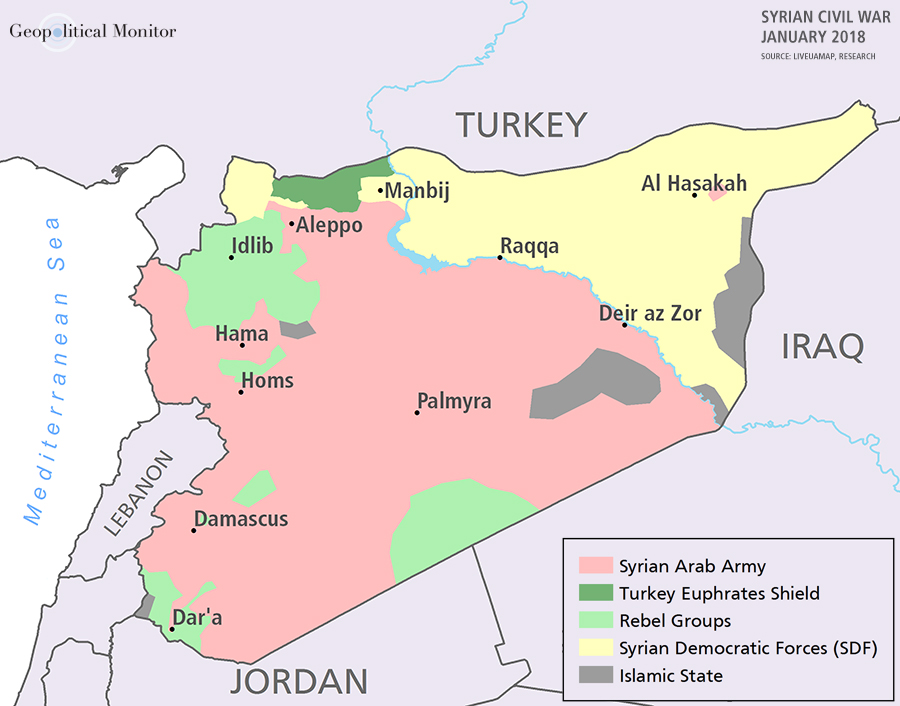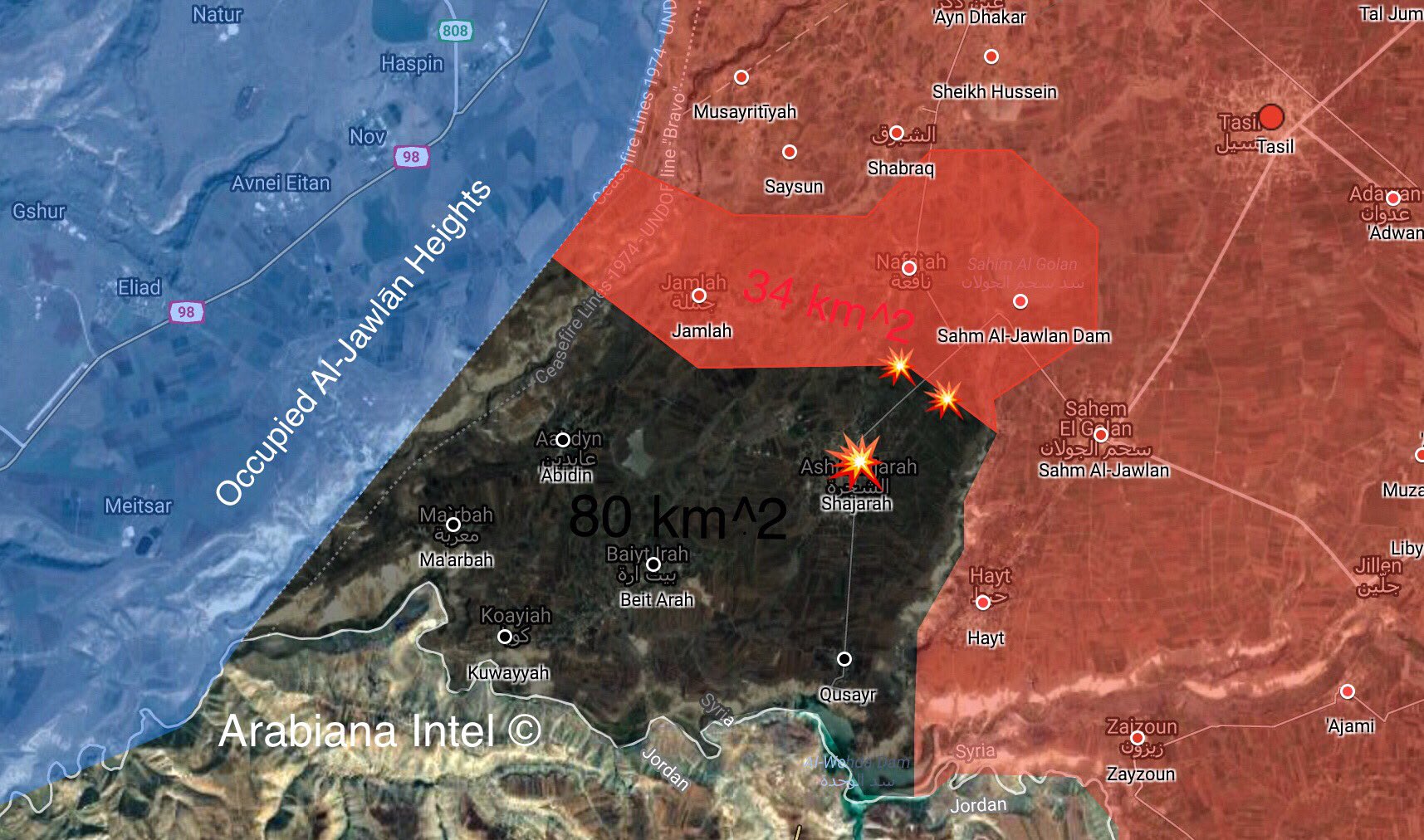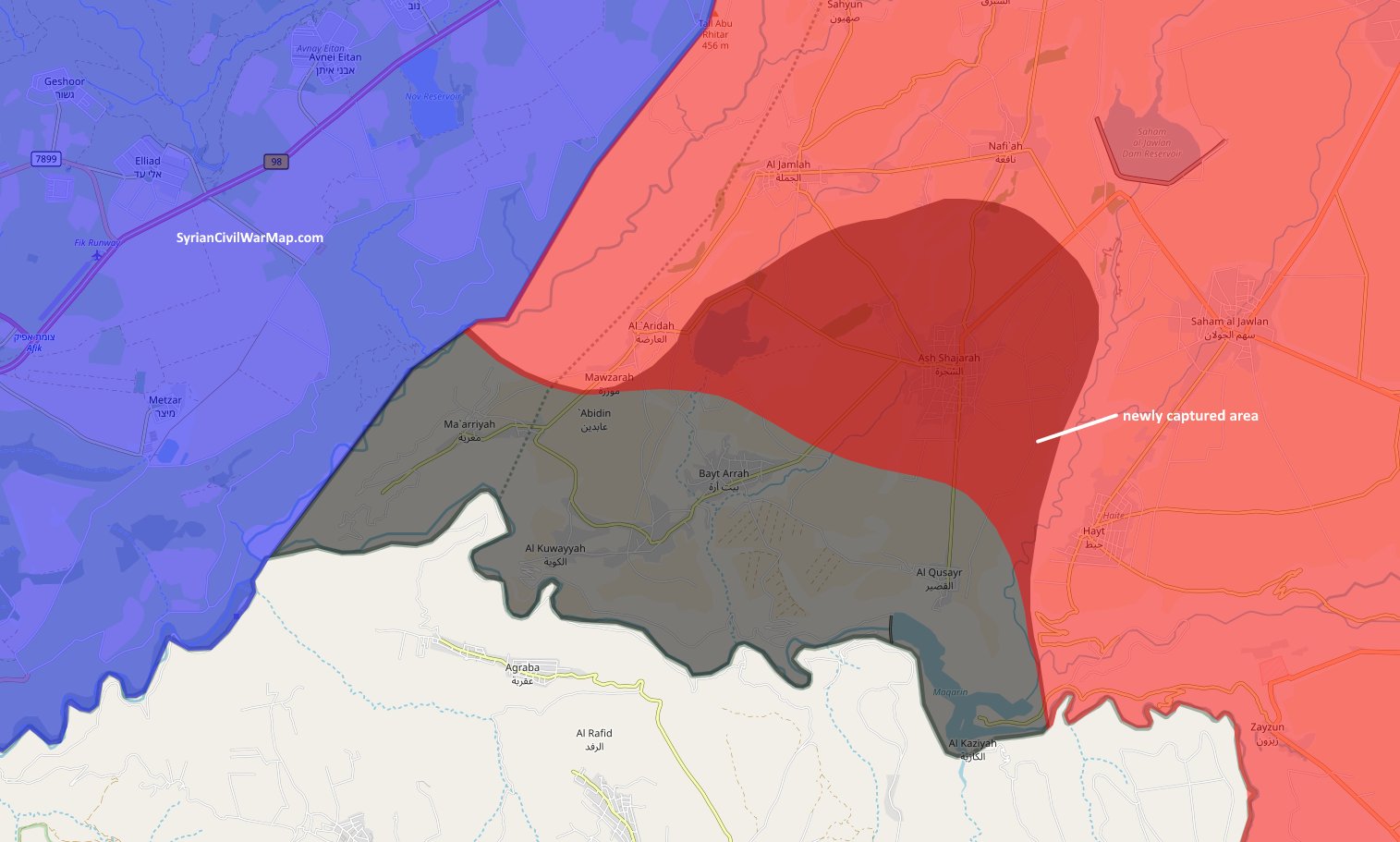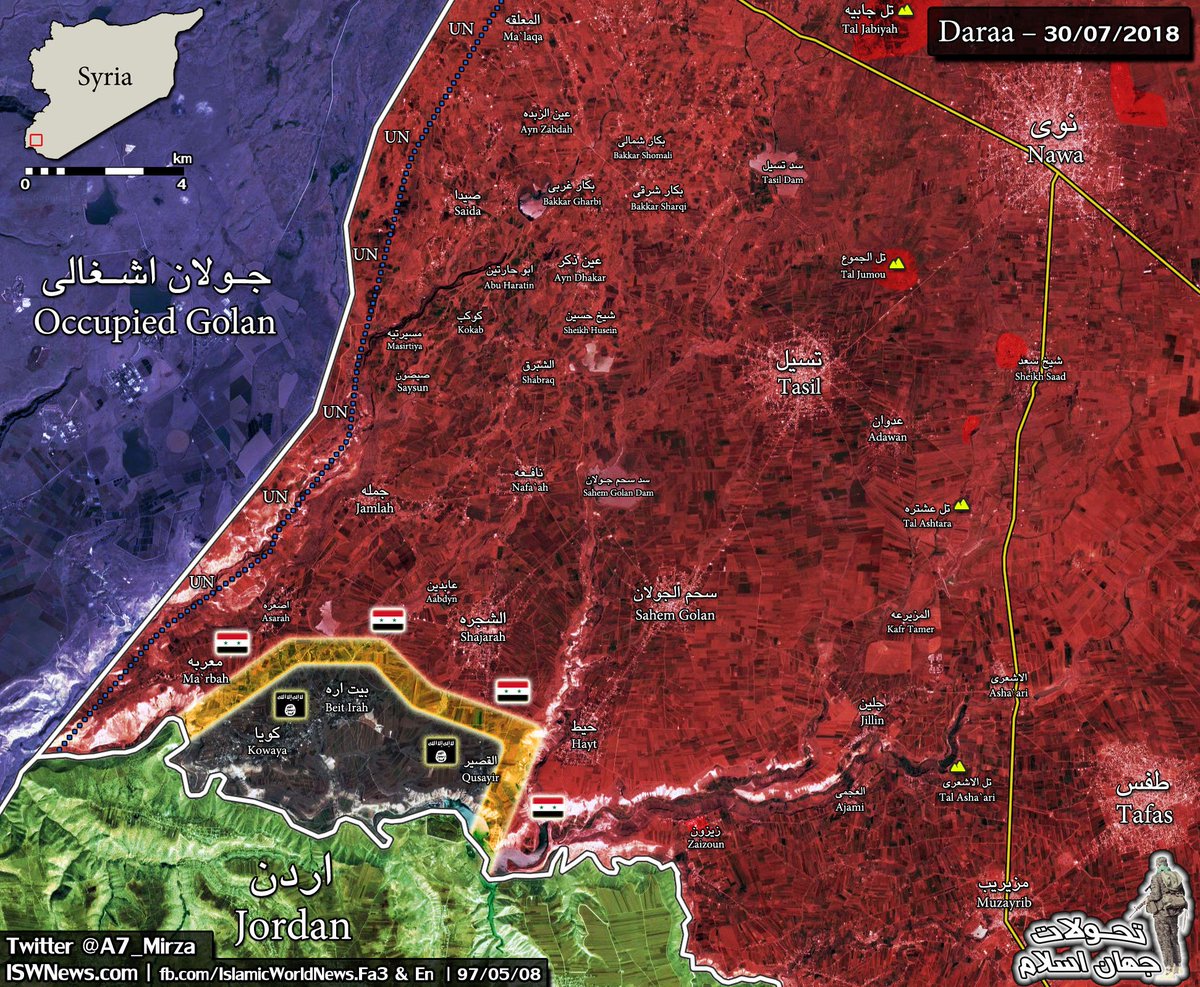Schmelzer
Valued Senior Member
The Syrian army (the Tiger forces) have taken several villages from the IS pocket in the South-West, the actual map is close to this:

On the other hand, the IS has started a serious attack in Suweida, from their pocket around the As Safa Vulcano. This was a region which, before the operation in Daraa, has been cleared from the IS, but later the IS has reappeared there. If this reappearance was based on their local forces (this is a large mountainous desert region, so enough places to hide) or based on support from the nearby US occupied Al Tanf pocket is unclear, that they came from Al Tanf is quite plausible, there was a similar reappearance of IS in the desert on the other side of Al Tanf too, so, as long as Al Tanf is occupied, there will be a danger of IS reappearance in the desert regions around it.
Given the discussion about Israel above, a quite interesting thing has happened. The IS has shot a few rockets into the Golan Heights. With the quite obvious intention that Israel will "retaliate" as usual, that means, against the Syrian army. Israel has, indeed, retaliated - but in a quite heavy way against the IS. Everybody was surprised, I'm too, the Russians have already thanked Israel for this via their military channels. One is free to speculate about the reasons for this change of the usual policy - if it was a change at all: The cases where Israel has "retaliated" against the Syrian troops based on claims that something has hit their territory were about fightings with the "moderate rebels" of Al Qaida, not against the IS, and Israel may follow different policies for Al Qaida and for IS.
Some have proposed the idea that the shooting of the Syrian plane was simply out of frustration for what has happened a day before. According to a not very reliable source, but at least partially confirmed, Syrian has shot two rockets toward IS positions. Israel tried to shot them, thinking they were directed against the Golan Heights. But once it became clear that they don't leave Syrian territory, they decided to stop this and started the self-destruction mechanism. Now, the first failure: It worked only for one fo the two interceptors. The second fell on Syrian territory. Usual in such a case Israel would, first, bomb the region where it fell down, and then send helicopters to either destroy or take away the remains, but, the second failure, they did not know where it landed. Those who found it was the Russians. So, they have identified the place where it landed only following the Russian helicopter which landed there to take it. To attack a Russian helicopter to destroy that rocket was, for obvious reasons, considered to be too dangerous. Why is this frustrating for Israel? It was the first application of their newest rocket defense system https://en.wikipedia.org/wiki/David's_Sling which was, in particular, designed for defense against Iskander rockets. According to this wiki, "One of the interceptors was detonated over Israel while the fate of the other is unknown." Correct, nobody (except some Russians) knows where it is now.
PS: I see, I have not yet posted this, forgotten it yesterday in the evening. Today, the map looks very different:
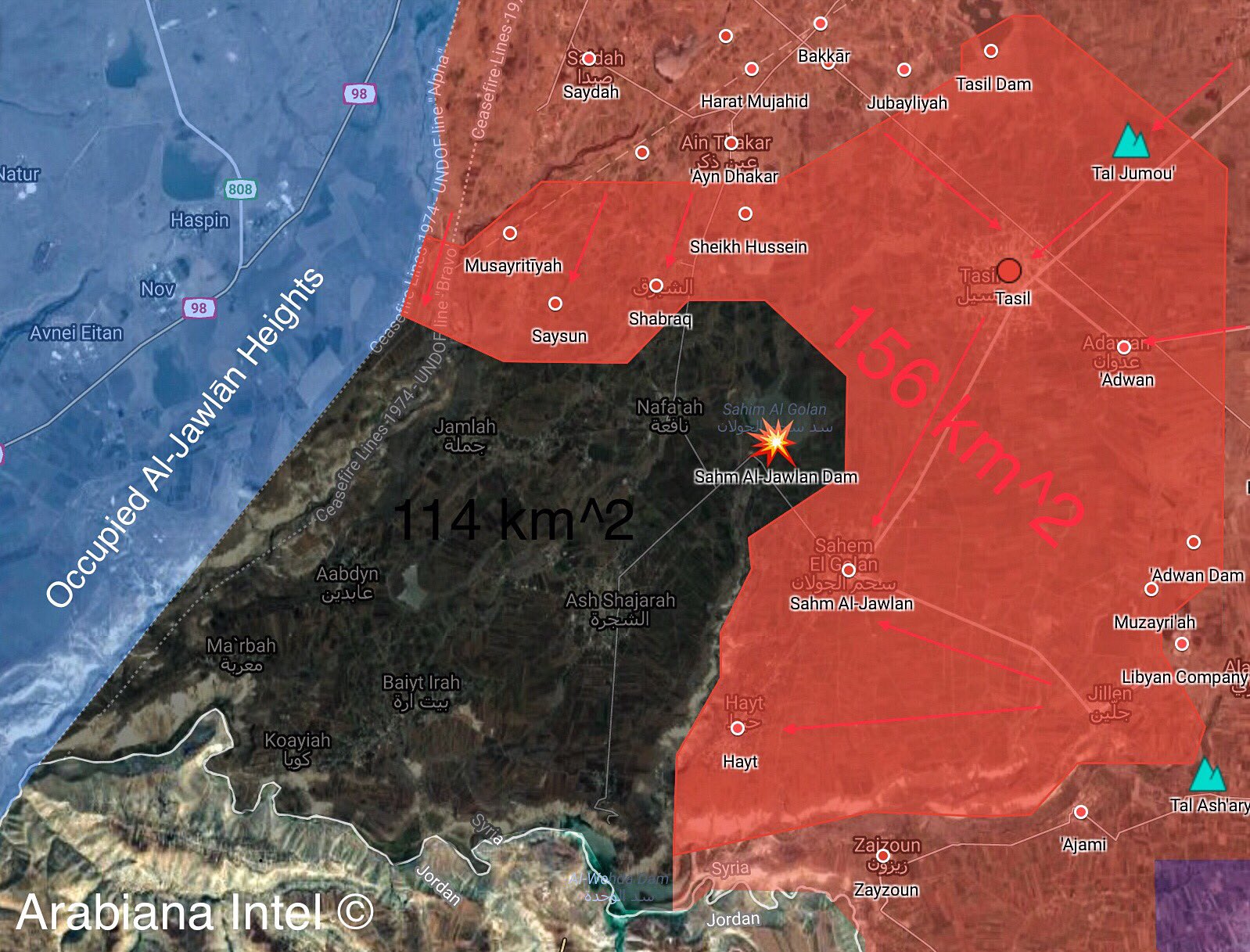
Essentially, the IS pocket has collapsed. The key for this was, it seems, that Tal Jumou has been taken - the key of the IS defense. After this, most of the region was indefensible and simply given up. Can the IS succeed to establish some defense line in the remains? There is, at least, a chance given the geography - the Eastern borderline of the remains is a quite serious valley, in principle easy to defend. But I doubt.

On the other hand, the IS has started a serious attack in Suweida, from their pocket around the As Safa Vulcano. This was a region which, before the operation in Daraa, has been cleared from the IS, but later the IS has reappeared there. If this reappearance was based on their local forces (this is a large mountainous desert region, so enough places to hide) or based on support from the nearby US occupied Al Tanf pocket is unclear, that they came from Al Tanf is quite plausible, there was a similar reappearance of IS in the desert on the other side of Al Tanf too, so, as long as Al Tanf is occupied, there will be a danger of IS reappearance in the desert regions around it.
Given the discussion about Israel above, a quite interesting thing has happened. The IS has shot a few rockets into the Golan Heights. With the quite obvious intention that Israel will "retaliate" as usual, that means, against the Syrian army. Israel has, indeed, retaliated - but in a quite heavy way against the IS. Everybody was surprised, I'm too, the Russians have already thanked Israel for this via their military channels. One is free to speculate about the reasons for this change of the usual policy - if it was a change at all: The cases where Israel has "retaliated" against the Syrian troops based on claims that something has hit their territory were about fightings with the "moderate rebels" of Al Qaida, not against the IS, and Israel may follow different policies for Al Qaida and for IS.
Some have proposed the idea that the shooting of the Syrian plane was simply out of frustration for what has happened a day before. According to a not very reliable source, but at least partially confirmed, Syrian has shot two rockets toward IS positions. Israel tried to shot them, thinking they were directed against the Golan Heights. But once it became clear that they don't leave Syrian territory, they decided to stop this and started the self-destruction mechanism. Now, the first failure: It worked only for one fo the two interceptors. The second fell on Syrian territory. Usual in such a case Israel would, first, bomb the region where it fell down, and then send helicopters to either destroy or take away the remains, but, the second failure, they did not know where it landed. Those who found it was the Russians. So, they have identified the place where it landed only following the Russian helicopter which landed there to take it. To attack a Russian helicopter to destroy that rocket was, for obvious reasons, considered to be too dangerous. Why is this frustrating for Israel? It was the first application of their newest rocket defense system https://en.wikipedia.org/wiki/David's_Sling which was, in particular, designed for defense against Iskander rockets. According to this wiki, "One of the interceptors was detonated over Israel while the fate of the other is unknown." Correct, nobody (except some Russians) knows where it is now.
PS: I see, I have not yet posted this, forgotten it yesterday in the evening. Today, the map looks very different:

Essentially, the IS pocket has collapsed. The key for this was, it seems, that Tal Jumou has been taken - the key of the IS defense. After this, most of the region was indefensible and simply given up. Can the IS succeed to establish some defense line in the remains? There is, at least, a chance given the geography - the Eastern borderline of the remains is a quite serious valley, in principle easy to defend. But I doubt.




